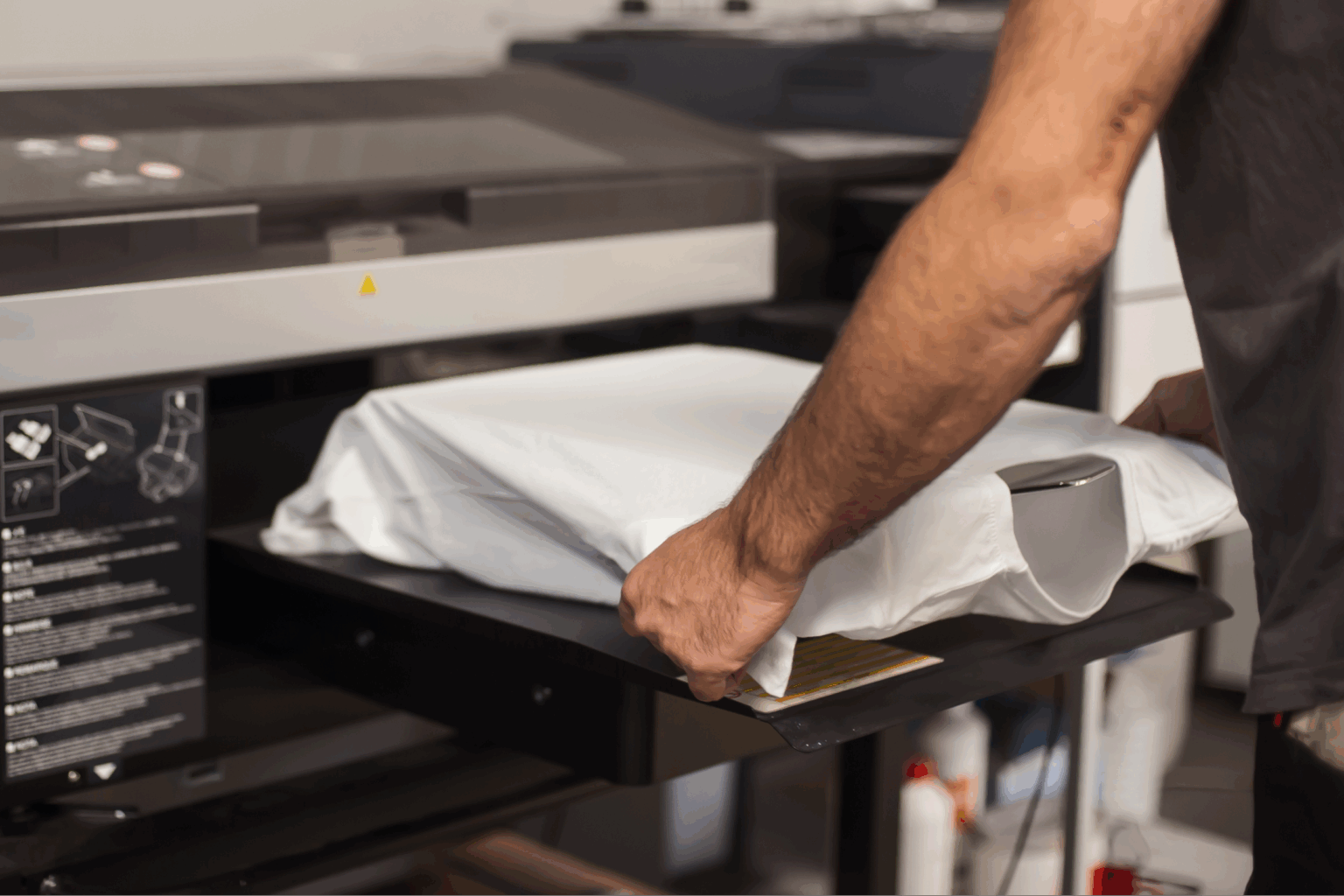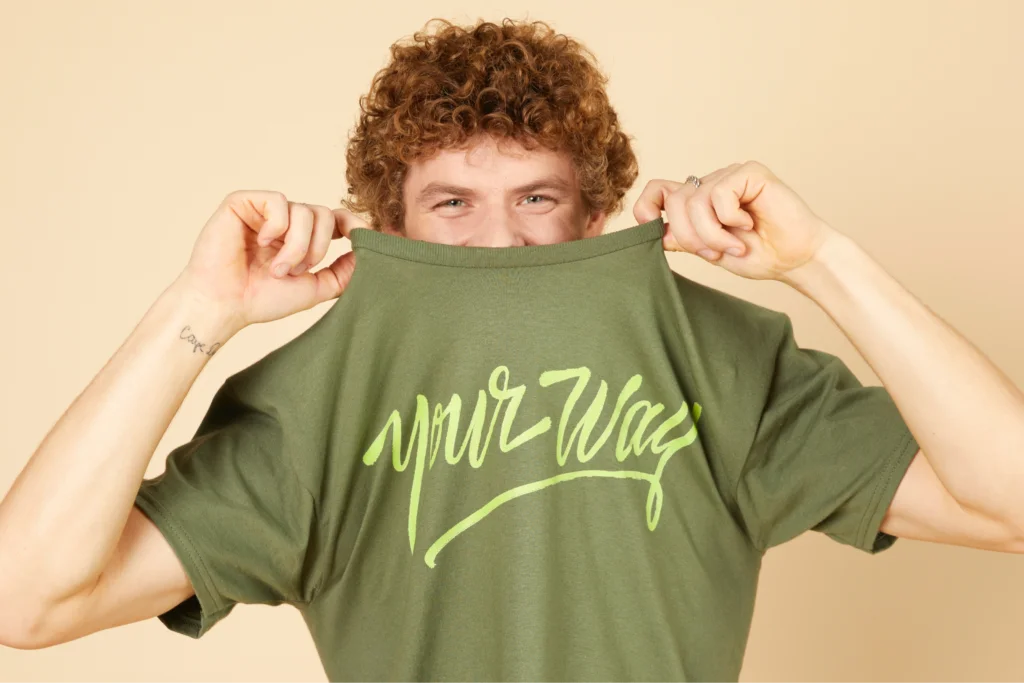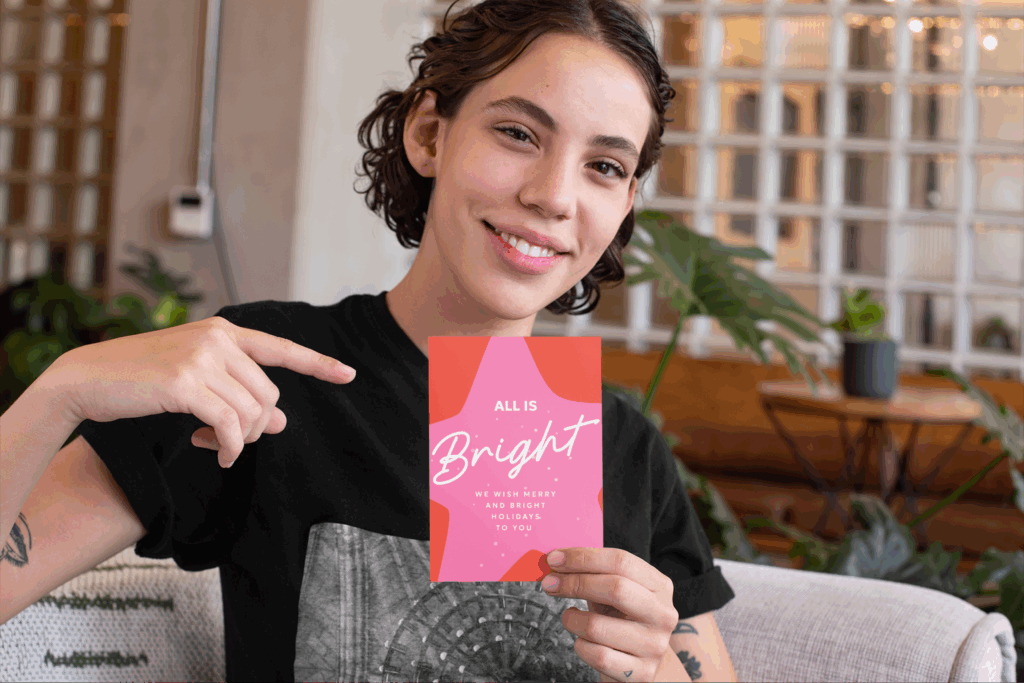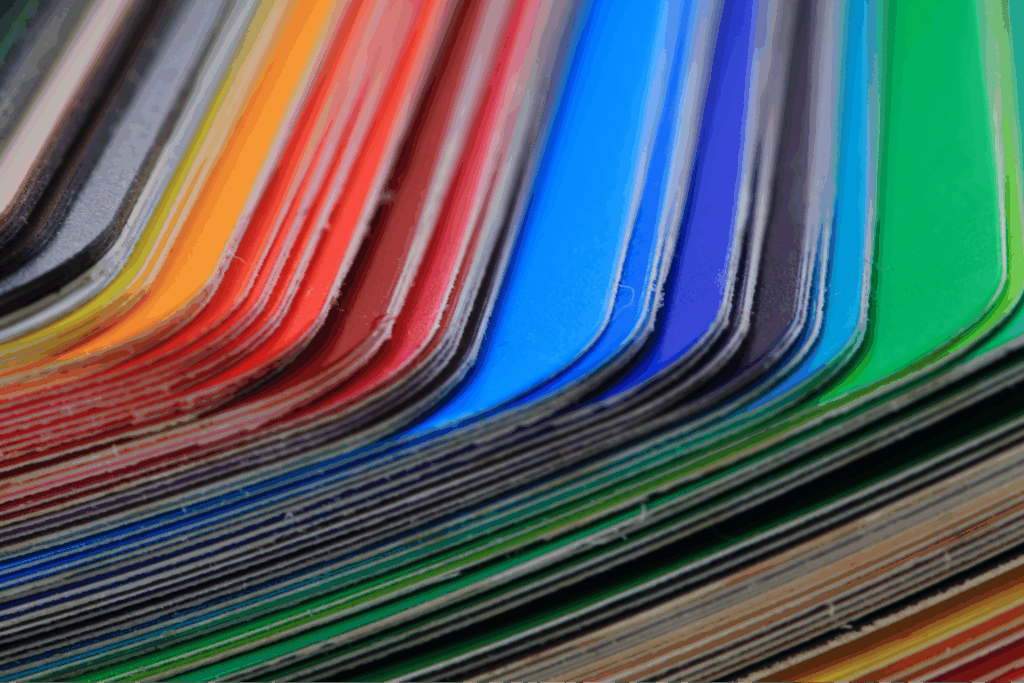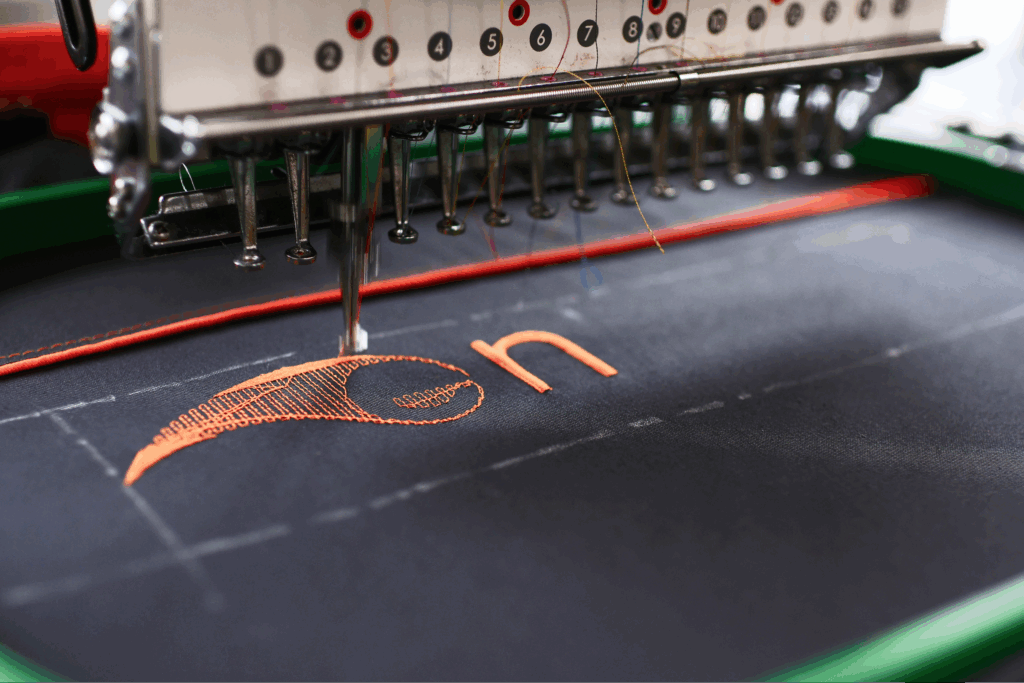Create a custom shirt with Printify
DTG (direct-to-garment) printing is a digital method that sprays eco-friendly ink directly onto fabric – ideal for detailed, full-color designs and small-batch production.
Whether you’re starting a print-on-demand business or looking for new ways to sell your artwork online, this guide explains how DTG printing works, its pros and cons, the best fabrics for vibrant results, and expert tips for launching your first DTG shirts in today’s on-demand market.
Key takeaways
- Vibrant, high-quality prints. DTG printing produces detailed, full-color images with photographic accuracy, making it perfect for intricate designs on custom apparel.
- Ideal for small-scale printing. DTG printers let small businesses, artists, and entrepreneurs print single shirts or test new designs without setup costs or minimum order requirements.
- Eco-friendly and sustainable alternative. Using water-based inks, DTG printers minimize waste and energy use, offering a more sustainable alternative to traditional printing methods.
- Best results on natural fibers. Direct-to-garment printing performs best on cotton and cotton blends, but ongoing advancements in DTG technology now support printing on a wider range of fabrics.
What is DTG printing?
![1 What is DTG printing DTG printing: Quick guide to direct-to-garment ([bp_year]) 1](https://prod.printify.com/wp-content/uploads/2024/10/1-What-is-DTG-printing_.png)
Direct-to-garment (DTG) is a printing technique that sprays water-based inks directly onto fabric using specialized inkjet printers. DTG printers produce vivid, full-color images with minimal setup and no need for screens or transfers.
Unlike screen printing, the DTG printing process is faster to set up, less labor-intensive, and ideal for small-batch or on-demand production.
This cost-effective printing method gives small businesses and creators an easy way to produce intricate designs and print directly on shirts, hoodies, and other apparel.Another advantage? DTG printers have no minimum order requirements, so you can print a single shirt or fulfill large runs as your business grows.
How does DTG printing work (step by step)?
![2 How does DTG printing work step by step DTG printing: Quick guide to direct-to-garment ([bp_year]) 2](https://prod.printify.com/wp-content/uploads/2024/10/2-How-does-DTG-printing-work-step-by-step_.png)
Although DTG printers come in many models, the DTG printing process always follows three key stages: pre-treatment, printing, and curing.
Pre-treatment process
Preparation for DTG shirt printing is essential. Pre-treatment allows multi-color designs printed with DTG inks to adhere evenly to the garment fibers, enhancing print quality and preventing color fading after washes.
DTG printers use two common methods:
- Hand spraying. The solution is sprayed manually in smooth, even passes to fully cover the printing area.
- Prepping machine. An automated device that ensures uniform coating and consistency – ideal for small businesses scaling up production.
Printing process
Once pre-treatment is complete and dried, the garment is loaded into the DTG printer, where the actual digital printing begins.
For dark shirts and garments, a white ink underbase is printed first to enhance the vibrancy of the final design. Then, using a mix of cyan, magenta, yellow, and black inks, DTG printers recreate intricate, full-color designs directly onto the fabric – much like a high-resolution inkjet printer but designed for textiles.
Curing process
After printing, the garment needs heat to cure the ink – this bonds the DTG inks permanently to the fabric and ensures long-lasting print quality.
There are two main curing methods – conveyor dryer and heat press:
- Conveyor dryer. Common in industrial DTG printers, this method provides even heat for faster production and consistent results.
- Heat press. A practical choice for entry-level DTG printers or small-batch orders, though less efficient for high-volume runs.
DTG printing: Pros and cons
![3 DTG printing Pros and cons DTG printing: Quick guide to direct-to-garment ([bp_year]) 3](https://prod.printify.com/wp-content/uploads/2024/10/3-DTG-printing_-Pros-and-cons.png)
DTG printing has become a leading choice for custom apparel businesses and independent creators because of its precision, flexibility, and low entry cost.
To help you decide if it’s right for your business, here’s a breakdown of its main advantages and limitations.
Pros:
- High-detail image quality, unlimited vivid colors. DTG prints have exceptional quality. This method can recreate complex designs in more colors, resulting in very detailed and high-quality prints.
- No minimum order quantity. With DTG printing, order as few or as many products as you like. DTG printers provide a cost-effective solution for printing products on demand.
- Eco-friendly. DTG printers use water-based inks, thanks to advances in DTG technology, and the process is very energy-efficient.
Although DTG printers have revolutionized the custom apparel industry, they also have some disadvantages.
Cons:
- Doesn’t work on every fabric. Although it depends on the DTG printer, blanks used to print t-shirts and other clothes should ideally contain at least 50% cotton blends for better absorption and print quality. That said, DTG technology continues to improve in this area.
- Limited application surfaces. Direct-to-garment printing applies ink to defined sections of the apparel rather than all-over prints, so extra print areas require additional setup and handling.
- Slower for bulk orders. DTG printing is slower than other printing technologies. However, it’s ideal for print-on-demand and eCommerce businesses because you can easily print a few shirts and still make a profit.
Make it happen today!
DTG vs screen printing
Choosing the right printing techniques for your custom apparel is tricky. Here’s a quick breakdown of how DTG printing and screen printing work to help you decide.
Consider these factors before making your choice:
- Upfront investment
- Design complexity
- Product quantity
- Brand image
Here’s a table comparing DTG and screen printing:
| Feature | DTG printing | Screen printing |
| Quality | Photorealistic, high-quality prints with detailed color gradients | vibrant, durable prints ideal for bold shapes and solid colors |
| Durability | Withstands over 50 washes | Industry standard for long-lasting garments with proper care |
| Design complexity | Excellent for intricate artwork | Limited to simpler designs with limited colors |
| Sustainability | Uses water-based inks and efficient printers, minimizing waste | Uses more water and materials; higher overproduction risk |
| Minimum order | Print a single shirt or a small batch on demand | Requires typically 5-100 units to offset costs |
| Production time | Slower setup, but faster turnaround, best for small orders | Requires prep time but enables faster production for bulk orders |
| Cost | Affordable for small orders, not ideal for bulk | Expensive for small orders, less costly for bulk |
Key takeaways:
- DTG printing offers high-quality, small-batch production with maximum design flexibility.
- Screen printing remains the go-to for large orders and long-term durability.
- Both printing methods deliver excellent results – choose based on your order quantity, design needs, and brand goals.
Choose the printing method that best suits your business by considering your specific needs.
Compare DTG vs screen printing in detail on our blog.d accessories. From classic t-shirts to cozy custom hoodies, the possibilities are endless.
Best fabrics for DTG printing (with product examples)
![4 Best fabrics for DTG printing with product examples DTG printing: Quick guide to direct-to-garment ([bp_year]) 4](https://prod.printify.com/wp-content/uploads/2024/10/4-Best-fabrics-for-DTG-printing-with-product-examples-1024x576.png)
Since DTG printers use water-based inks, natural fabrics produce the best results. They absorb ink well, creating vivid colors printed directly onto the garment.
These are the most suitable textiles for DTG:
- Cotton
- Ring-spun cotton
- Combed and ring-spun cotton
- Organic cotton
- Linen, other natural textiles
Explore DTG-ready products – from classic t-shirts and cozy custom hoodies to sweatshirts and totes. Each blank is selected for consistent print results.
Tips for your first DTG design
![5 Tips for your first DTG design DTG printing: Quick guide to direct-to-garment ([bp_year]) 5](https://prod.printify.com/wp-content/uploads/2024/10/5-Tips-for-your-first-DTG-design-1024x576.png)
DTG printing offers exceptional precision and color depth, making it ideal for complex, multi-color artwork. To get the most out of your design, follow these best practices:
- Research what sells. Platforms like Etsy, Pinterest, and Amazon are great places to explore trends and understand what designs customers are buying. Use them for inspiration – never imitation.
- Use high-resolution images. For sharp, vivid colors and high-quality prints, export your design at 300 DPI or higher and ensure it’s scaled correctly. This helps DTG printers reproduce detailed designs with accuracy.
- Follow print file guidelines. Each item in the Product Creator (formerly known as the Mockup Generator) has its own set of file requirements for optimal placement and sizing. Double-check these before publishing.
- Preview your product. The Product Creator also allows you to create realistic mockups that help you see how the design will look on actual garments.
- Use free, ready-made assets. To get started, check out Printify’s free, commercial-use design library. You’ll find seasonal and niche artwork that can be applied to products right away.
Strong, intentional design connects your brand to your audience. Focus on clarity, color balance, and purpose to make your first DTG collection stand out. For more first design tips, tricks, and resources, check out our recent article.
Frequently asked questions
Direct-to-garment (DTG) printing is a digital printing method that sprays water-based inks directly onto fabric using DTG printers. These specialized inkjet printers apply the ink to cotton and cotton blends, creating soft, high-quality prints with photographic precision. It’s ideal for custom apparel and t-shirts with detailed, full-color designs.
Yes. DTG printing produces high-resolution, full-color designs with vivid colors and smooth gradients. It works best on 100% cotton for long-lasting results. Compared to screen printing, DTG printers offer a wider color range and no setup, making them ideal for small-batch or detailed artwork.
DTG printing offers flexibility and precision but has limitations:
- Not ideal for bulk orders – slower than screen printing for large quantities.
- Limited to cotton fabrics – synthetics may reduce print quality.
- Requires pre-treatment and a white ink underbase for dark garments.
- Higher per-unit cost for high-volume runs.
DTG prints can last over 50 washes with proper care. Wash inside out on a cold setting, avoid using bleach/high heat, and iron inside out. Proper curing on industrial DTG printers helps maintain vibrant colors and softness.
What’s the difference between entry-level and industrial DTG printers?
- Entry-level DTG printers are compact and affordable, ideal for small businesses or single-shirt printing.
- Industrial DTG printers handle large-scale production with multiple print heads, RIP software, and conveyor dryers for consistent quality.
Use entry-level models to start; upgrade to industrial DTG printers as your business scales.
Closing thoughts
DTG printing powers modern on-demand manufacturing – combining quality, flexibility, and creativity in one printing method. For both new entrepreneurs and growing brands, DTG printing is an accessible, low-risk way to create custom apparel that meets today’s demand for personalization and sustainability.
DTG printing is the go-to printing method for print-on-demand entrepreneurs of all calibers. Here’s why:
- Affordable entry point. With Printify, you don’t need to invest in DTG printers or other aspects – start printing today.
- High-detail print quality. With DTG, the entire design looks photorealistic on printed garments.
- No minimum order quantity. Order as few or as many products as you wish.
- Environmentally-friendly. With eco-friendly inks and on-demand printing, DTG is more sustainable.
Whether you’re launching your first design, building a full-scale print-on-demand business, or expanding an existing brand, DTG printing gives you the freedom to create without limits.



